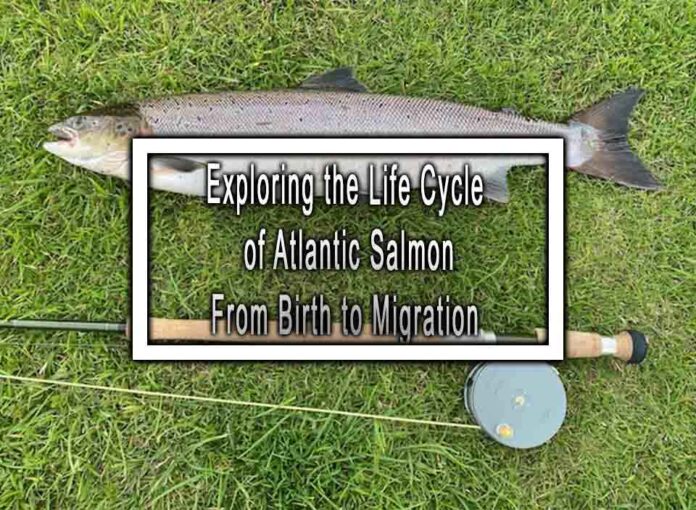The life cycle of Atlantic salmon (Salmo salar) is a remarkable journey that takes them from their birthplace in freshwater rivers to the vast expanse of the North Atlantic Ocean and back again. Here’s an exploration of the various stages in the life cycle of Atlantic salmon:
1. Egg Stage:
- The life cycle begins when a female salmon, known as a hen, deposits her eggs in a nest called a redd. She uses her tail to create a depression in the riverbed gravel, where she lays hundreds to thousands of eggs.
- Male salmon, called bucks, fertilize the eggs by releasing sperm, or milt, over them.
- The eggs are then covered with gravel to protect them.
2. Alevin Stage:
- After several weeks, the eggs hatch into alevins, small fish with yolk sacs attached to their bodies.
- Alevins remain hidden in the gravel and rely on their yolk sacs for nourishment until they fully absorb them.

3. Fry Stage:
- Once the yolk sac is absorbed, alevins emerge from the gravel as fry, which are miniature versions of adult salmon.
- Fry feed on tiny aquatic insects and other small organisms found in the river.
4. Parr Stage:
- As fry grow and mature, they develop vertical stripes along their sides, called parr marks.
- At this stage, they are known as parr and continue to feed in freshwater habitats, growing larger and stronger.
5. Smolt Stage:
- As parr continue to develop, they undergo physiological changes that prepare them for migration to the ocean. This transformation is known as smoltification.
- Smolts acquire a silvery appearance and undergo adjustments to tolerate the transition from freshwater to saltwater.
6. Ocean Migration:
- Smolts make their way downstream from their freshwater habitats to estuaries and the open ocean.
- Atlantic salmon can spend several years at sea, growing rapidly on a diet of fish and krill.
7. Adult Stage:
- After spending one to several years at sea, Atlantic salmon return to their natal rivers to spawn. This journey is known as the “return migration.”
- Adult salmon, now referred to as spawners, navigate upstream, overcoming obstacles like waterfalls and predators.
8. Spawning Stage:
- Once they reach their natal river and nest, male salmon compete for access to females by engaging in aggressive displays and combat.
- The female digs a redd and deposits her eggs, which are fertilized by a male.
- After spawning, both male and female salmon typically die, completing their life cycle.
9. Emergence of Fry:
- The eggs hatch into alevins, and the cycle begins anew.
This incredible journey is a testament to the adaptability and tenacity of Atlantic salmon. It involves navigating through various habitats, including freshwater rivers, estuaries, and the open ocean, and encompasses dramatic physical and behavioral changes at each life stage. It’s also a critical cycle for the species, as it ensures their survival and the continuation of their populations.











